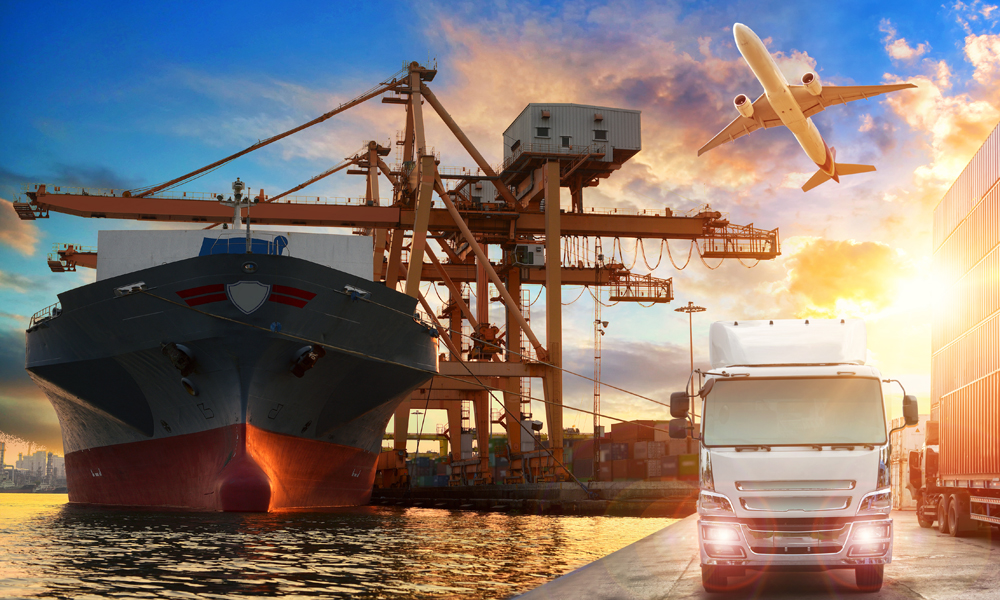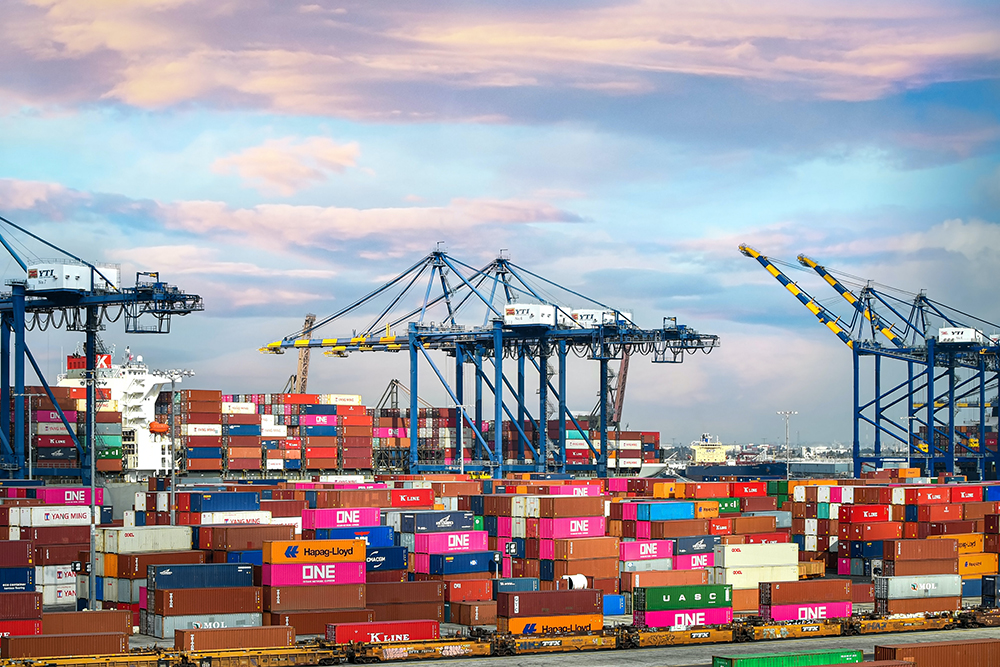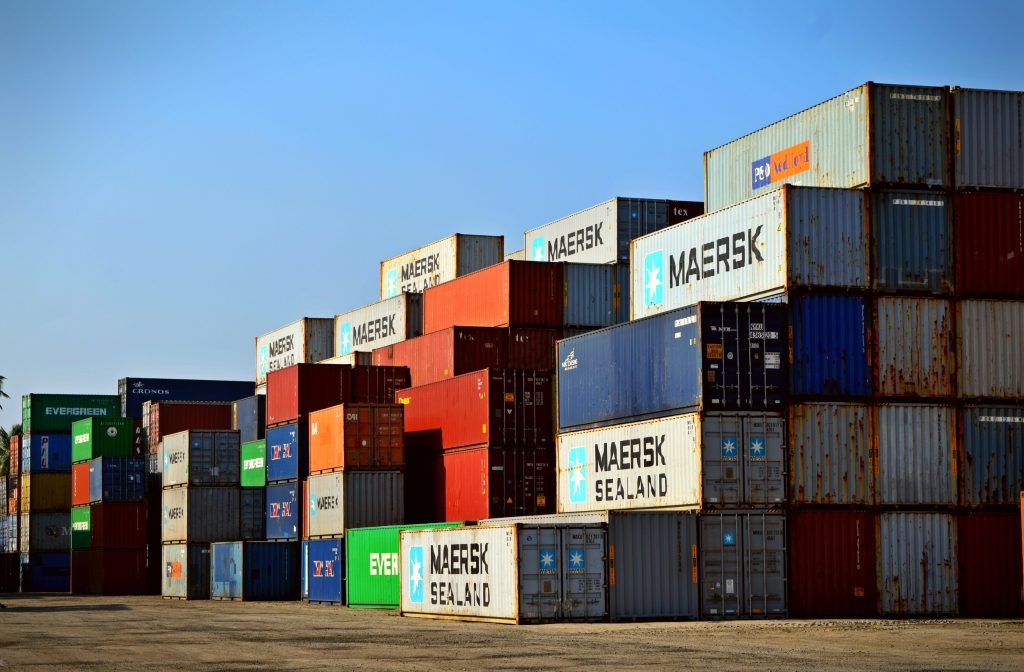-
Subscribe to Blog:
SEARCH THE BLOG
CATEGORIES
- Aerospace
- Asset Maintenance
- Automotive
- Blog
- Building Products
- Case Studies
- Chemical Processing
- Consulting
- Food & Beverage
- Forestry Products
- Hospitals & Healthcare
- Knowledge Transfer
- Lean Manufacturing
- Life Sciences
- Logistics
- Manufacturing
- Material Utilization
- Metals
- Mining
- News
- Office Politics
- Oil & Gas
- Plastics
- Private Equity
- Process Improvement
- Project Management
- Spend Management
- Supply Chain
- Uncategorized
- Utilities
- Whitepapers
BLOG ARCHIVES
- July 2025 (1)
- June 2025 (4)
- May 2025 (1)
- April 2025 (1)
- March 2025 (1)
- February 2025 (4)
- January 2025 (4)
- December 2024 (4)
- November 2024 (2)
- October 2024 (6)
- September 2024 (5)
- August 2024 (5)
- July 2024 (6)
- June 2024 (3)
- May 2024 (3)
- April 2024 (4)
- March 2024 (3)
- February 2024 (4)
- January 2024 (5)
- December 2023 (2)
- November 2023 (1)
- October 2023 (6)
- September 2023 (3)
- August 2023 (4)
- July 2023 (2)
- June 2023 (3)
- May 2023 (7)
- April 2023 (3)
- March 2023 (3)
- February 2023 (5)
- January 2023 (6)
- December 2022 (2)
- November 2022 (5)
- October 2022 (5)
- September 2022 (5)
- August 2022 (6)
- July 2022 (3)
- June 2022 (4)
- May 2022 (5)
- April 2022 (3)
- March 2022 (5)
- February 2022 (4)
- January 2022 (7)
- December 2021 (3)
- November 2021 (5)
- October 2021 (3)
- September 2021 (2)
- August 2021 (6)
- July 2021 (2)
- June 2021 (10)
- May 2021 (4)
- April 2021 (5)
- March 2021 (5)
- February 2021 (3)
- January 2021 (4)
- December 2020 (3)
- November 2020 (3)
- October 2020 (3)
- September 2020 (3)
- August 2020 (4)
- July 2020 (3)
- June 2020 (5)
- May 2020 (3)
- April 2020 (3)
- March 2020 (4)
- February 2020 (4)
- January 2020 (4)
- December 2019 (3)
- November 2019 (2)
- October 2019 (4)
- September 2019 (2)
- August 2019 (4)
- July 2019 (3)
- June 2019 (4)
- May 2019 (2)
- April 2019 (4)
- March 2019 (4)
- February 2019 (5)
- January 2019 (5)
- December 2018 (2)
- November 2018 (2)
- October 2018 (5)
- September 2018 (4)
- August 2018 (3)
- July 2018 (2)
- June 2018 (4)
- May 2018 (3)
- April 2018 (3)
- March 2018 (2)
- February 2018 (2)
- January 2018 (1)
- December 2017 (1)
- November 2017 (2)
- October 2017 (2)
- September 2017 (1)
- August 2017 (2)
- July 2017 (2)
- June 2017 (1)
- April 2017 (3)
- March 2017 (3)
- February 2017 (2)
- January 2017 (2)
- December 2016 (2)
- November 2016 (4)
- October 2016 (4)
- September 2016 (3)
- August 2016 (6)
- July 2016 (4)
- June 2016 (4)
- May 2016 (1)
- April 2016 (3)
- March 2016 (4)
- February 2016 (2)
- January 2016 (4)
- December 2015 (3)
- November 2015 (3)
- October 2015 (1)
- September 2015 (1)
- August 2015 (4)
- July 2015 (6)
- June 2015 (4)
- May 2015 (7)
- April 2015 (6)
- March 2015 (6)
- February 2015 (4)
- January 2015 (3)
CONNECT WITH US
Tag Archives: Transportation Industry
In part 1 of this blog series about logistics, we talked about the state of the industry today. Summed up in one word: Chaos.
We who work with logistics have seen supply chain disruptions before. But nothing like this. Foreign manufacturing partners can’t get the materials they need to do the job. If product is manufactured and loaded onto a cargo ship, there’s every chance that ship will be floating offshore, not allowed to enter a port because of pandemic travel restrictions and complex testing requirements. CNN recently reported that some workers on cargo ships have been onboard for a full year because they can’t get off due to COVID restrictions. If the cargo gets to the port, the containers are stacked up like so many Legos because the trucking industry is experiencing an unprecedented labor shortage — there’s nobody to drive the trucks that haul the cargo to its destination.
The perfect logistics storm. And in its wake, angry consumers, burned-out employees across the logistics spectrum, and frustrated business owners and managers who just want to get their product to market.
What’s being done about it

The White House launched the Supply Chain Disruptions Task Force in June, which focused on bottlenecks that are bedeviling everyone in the logistics industry. As part of that, President Biden named a “Port Envoy” specifically charged with driving coordination between private companies who run the transportation industry and the logistics supply chain.
One recommendation from the task force: Keep California ports open 24/7.
That’s all well and good. But many in the logistics industry say it solves only part of the problem. Brian Bourke, chief growth officer at logistics firm Seko, summed it up nicely in an interview with Bloomberg. He said the 24/7 port schedule mandate is pointless without trucks to pick up the cargo at the port and warehouses being open to receive it. He said touchpoints at all levels of the process need to be in sync to solve the problem. “Everything is connected … that’s why they call it a supply chain.” Good point.
What logistics companies can do

In part 1 of this blog series, we highlighted some actions logistics companies can take right now. It’s about streamlining and perfecting operations, making processes on your end bulletproof, and making sure you’re functioning at the highest capacity. It won’t solve the pandemic problem and it won’t get all of those containers out of ports if truckers aren’t on the job, but you will be doing what you can.
Some of our recommendations included:
Rethink foreign supply chains. Having Asia as a supply partner has long been seen as a way to cut costs. But those cheaper costs come at a price when the supply chain breaks down. Finding more domestic partners is a must.
Make operations more efficient. Look at your own house with a 360-degree perspective to make sure you’re as efficient as possible.
Use SIOP to perfect supply levels. For more information on SIOP and how it can increase your operations efficiency, download our free eBook, Sales, Inventory and Operations Planning: It’s About Time.
Ramp up your hiring. Rethink your pay, benefits, PTO and other perks for the hands you need to get product from point A to B.
For a more detailed look into these recommendations, read “Moving logistics forward from the great bottleneck of 2021: Part 1.”
26th Annual Third-Party Logistics Study

In September, NTT Data released their 2022 26th Annual Third-Party Logistics Study, which highlighted how the industry is managing through the worst crisis in decades. The report has several areas of insight into how logistics companies can move forward, and what logistics peers are thinking.
Here are some highlights from the report:
The intelligent supply chain: The role of technology
The report states “new technology holds the potential to uncover opportunities, increase efficiency and reduce risk within the supply chain, and technology continues to play a critical role in the supply chain. This year’s study respondents reported that promising technologies include 5G, real-time data transmission, Internet of Things and data analytics.”
- 52% of shippers and 63% of 3PLs said 5G technology is either moderately or critically important.
- 63% said they are investing in Internet of Things technology to improve workforce productivity, while 57% said it will improve real-time decision-making and create a competitive differentiator in the market.
- Shippers are focused on increased investment in intelligent data analytics (26%), robotics (20%) and autonomous forklifts (20%).
Cold chain: Planning and moving sensitive loads
According to the report, “the cold chain, which handles everything from ultra-cold vaccine distribution, to fresh food, is critical, and each link must stay connected flawlessly to ensure the quality and safety of temperature-sensitive products. To help meet demands, shipper respondents with cold chains reported a mix of in-house, partially outsourced and fully outsourced services.”
- 89% of shippers reported have a solid cold chain strategy.
- Most shippers, 91%, and 3PLs, 100%, said they expect demand for cold chain capacity to increase over the next three years.
- Both shippers (70%) and 3PLs (52%) said COVID-19 has accelerated their growth plans, increasing their need for more cold chain capacity.
- 70% of shippers said they expect to grow inhouse cold chain capabilities and talent over the next three years.
- 50% said they plan to outsource more of their cold chain capabilities. About 90% of 3PLs said they plan to expand their cold chain capabilities and service offering.
The effects of COVID-19
The study states, “COVID-19 drew national and global attention to the supply chain and highlighted the need for contingency planning and risk mitigation strategies. Researchers took a deeper look at the effect the pandemic had on shippers and their logistics providers as well as how their experiences have shaped their future plans.”
- 96% of 3PLs and 100% of shippers said they are enhancing their readiness and continuity planning. The top five areas 3PLs are currently working to improve based on current approved projects and budgets are data analysis and visibility (50%), labor management and scheduling (48%), domestic transportation and logistics (38%), and warehouse distribution and operations (38%).
- Shippers reported currently working to improve demand forecasting (42%), capacity forecasting (40%), international transportation and logistics (38%), supply chain network design or redesign (36%), and data analysis and visibility (33%).
Rebalancing supply chains
According to the study: “For years supply chains focused on reducing inventory levels and cutting costs, but the past year has drawn attention to the risk of becoming too lean. A move to just-in-time inventory has impacted the resilience and agility of supply chains to respond to significant disturbances, and this year’s Annual Third-Party Logistics Study looked at shippers’ plans to rebalance supply chains.”
- 68% of shippers believe that supply chains have become too global and must be rebalanced toward more regional and local/domestic ecosystems within larger global enterprises.
- 83% of shippers said they plan to adjust sources of supply as a direct result of efforts to rebalance toward regional and local/domestic sources.
- For shippers, several factors are contributing toward global rebalancing, including increased need for supply chain resilience (71%), increased awareness of supply chain vulnerabilities (63%) and more restrictive trade policies (41%).
For a deeper dive into these areas, download the entire report here.
At USC Consulting Group, we’ve been helping companies find efficiencies in the midst of challenging times for more than 50 years. Contact us today to learn more.
When is the last time you can remember logistics dominating the headlines? Rarely has this industry gotten this much press. That’s because the public is feeling what we who work with logistics have known for awhile — bottlenecks and supply chain disruptions have led to an unprecedented level of delay transporting goods from point A to point B.
Foreign suppliers have been stymied because of travel restrictions as a result of complex and confusing vaccination and testing processes. But even when the cargo arrives, ports on both coasts of the U.S. are filled to the brim with container ships, backed up like a logjam because there are no trucks available to transport those containers to where they need to go.
As anyone involved with the industry knows, logistics is the unsung hero of the American economy. The public rarely thinks about how the product they’re putting into their grocery cart made its way to the store, but they sure notice when it’s not on the shelf.
The problem has gotten so bad that it has captured the attention of the media and even the White House.
All eyes are on logistics right now
This past month, logistics and supply chain disruptions have been the lead story on the evening news night after night, with reporters stationed at ports shooting footage of the enormous backlog of containers. News articles are advising consumers on how to plan for empty shelves in their local grocery store or worse yet, the toy stores around the holidays. Remember the toilet paper shortage of 2020? It’s on the horizon again. Parents are urged to shop now for holiday gifts for their kids.
The problem has become so dire that the White House launched the Supply Chain Disruptions Task Force in June, which focused on bottlenecks that are bedeviling everyone in the logistics industry. As part of that, President Biden named a “Port Envoy” specifically charged with driving coordination between private companies who run the transportation industry and the logistics supply chain.
At the UN General Assembly earlier this fall, heads of state worldwide got a letter from the International Chamber of Shipping (ICS) warning of a global transport system collapse if governments don’t restore freedom of movement to transport workers.
The government doesn’t have to tell the logistics industry about the problems it has been facing since 2020. And typical bureaucratic red tape might suggest they’re not going to snap their fingers and fix what’s wrong immediately. So what can logistics companies do to make sure the goods they deliver will keep rolling?
At USC Consulting Group, we’ve been helping companies navigate all types of crisis situations for more than fifty years. In this two-part blog, we’ll highlight some of the strategies we’re recommending to our clients.

Shipping containers pile up at the Port of Los Angeles
Rethink foreign supply chains
Having Asia as a supply partner has long been seen as a way to cut costs. But that business model had been fraying at the edges even before the pandemic unraveled it. According to the 2022 26th Annual Third-Party Logistics Study, 83% of shippers saw supply chain disruption this year, and 68% of logistics pros believe supply chains have become too global. Looking for domestic suppliers is vital. And it’s not necessarily about the pandemic. Yes, the issue of pandemic-based restrictions and hold-ups exists now, but when this pandemic is in our collective rear-view mirror, it’s still vital to have more domestic suppliers. That’s because trade policies, diplomatic relations, tax laws, and governmental regulations can change, putting your supply chain in jeopardy.
Make operations more efficient by taking a 360-degree look
We specialize in making operations more streamlined by looking for hidden opportunities for efficiency that exist in your current processes and procedures. Will this solve the problem of your containers sitting at a port instead of being on the road? No. But making sure your internal operations are running at optimal efficiency will help balance your bottom line in the event more slowdowns occur.
Use SIOP to perfect supply levels
You’re probably familiar with sales and operations planning (S&OP), a process that involves sales forecast reports, planning for demand and supply, and other factors. It’s useful, but we think it’s incomplete. Inventory is left out of the mix. If you’ve been using S&OP, we encourage you to use sales, inventory, and operations planning, that factors in your all-important inventory. For more information on SIOP and how it can increase your operations efficiency, download our free eBook, Sales, Inventory, and Operations Planning: It’s About Time.
Ramp up your hiring
The trucking industry in particular is stretched extremely thin when it comes to drivers. All industries are experiencing a hiring crunch right now, and logistics needs to step up its hiring game to entice more people to sign on to the great jobs in transportation. That means competitive pay, solid benefits, and generous PTO.
In Part 2 of this topic, we look deeper into the Third-Party Logistics Study and go into more recommendations for moving logistics forward.
Go to Part 2 of Moving Logistics Forward series →
When you think of shipping and transportation, perhaps the last thing you consider is the threat that cybercrime can pose to the industry. However, as technology advances and systems become increasingly connected to online networks, cybersecurity is a necessity of modern shipping logistics.
Meanwhile, all kinds of digital attacks are increasing against a wide variety of industries. In this dangerous landscape, shipping companies must build strategies and implement processes that increase the safety of their digital systems.
From the rising threats to the evolving role of cybersecurity in shipping logistics, here’s what you should know.
The Rising Threat
When the COVID-19 pandemic struck, shutting down economies and causing widespread financial uncertainty, hackers took it as an opportunity to increase their malicious efforts. As many as 90% of surveyed IT leaders said they experienced an increase in cyber attacks due to the pandemic. Meanwhile, 93% said they had to delay key security projects in order to manage remote-work transitions.
This demonstrates the vulnerability of online global systems. Threats like the Kwampirs malware are running rampant and IT leaders are caught off-guard while attempting to deal with other pressing concerns.
But what does this have to do with the shipping logistics industry?
All kinds of new and highly connected technologies are propagating in the fleet management market. These innovations consist of sensors and monitors in the form of Internet of Things (IoT) devices, AI route-improvement software, and Advanced Driver Assistance Systems (ADAS) that improve driver safety through assisting with difficult and repetitive tasks. These in-vehicle monitoring systems bring location tracking and enhanced driver analytics to fleet management, creating altogether safer roads.
But what happens if these systems get hacked?
June of 2017 was a preview of exactly that. When 80 logistics and transportation ports were struck by ransomware, shipping company A.P. Moller-Maersk lost $300 million. Meanwhile, many deliveries were held and drivers forced to idle. The attack disrupted a complex supply chain and the effects rippled through various markets.

A.P. Moller-Maersk lost $300 million in 2017 due to a cyber attack.
As we come to increasingly rely on connected tech and even fully autonomous vehicles, the threat of cyberattack can be dangerous both financially and physically. Fortunately, there are a few simple steps you can take to better ensure supply chain cybersecurity.
Initiatives to Enhance Cybersecurity
Cybersecurity is needed in virtually every industry in today’s highly digital world. Securing your systems, however, can be difficult without the right professional assistance and reliable data services.
But finding the right help can be a challenge in its own right. Information systems professionals are in high demand, especially in the manufacturing and supply sector, where experts with the right skill set can earn their piece of a $2.17 trillion market.
Additionally, all kinds of IT personnel can build a better approach to secure shipping logistics through strategies like the following:
1. Assess compliance standards across the board.
A variety of data security standards are present across industries, such as HIPAA in healthcare or PCI-DSS in retail. Ensure all third-party suppliers and vendors meet relevant standards to facilitate safer information transfer.
2. Secure your software.
Software can be a vulnerability in supply chains. Protect yours with firewalls, VPNs, Transport Layer Security (TLS), and more to better ensure the safety of your networks and equipment.
3. Limit and monitor access.
Every user should maintain their own strong passwords and clearances. Data systems like blockchain can be helpful in securing information behind individualized user authorization keys, complete with immutable timestamps recording access to the system.
4. Educate your employees.
Avoiding a data breach can come down to simply educating your employees on avoiding links from unknown senders. Ensure all shipping logistics workers understand the importance of strong private passwords and maintain an awareness of common phishing practices.
5. Continuously run vulnerability assessments.
Risk assessments should be run at consistent intervals to help keep systems updated and functioning with the protections they need. Your assessments should include all IoT devices and networked equipment that could present an access point for an attacker.
When it comes to securing the digital systems throughout your shipping logistics processes, each of these strategies can mean the difference between a data breach or a prevented hack. Ensure your current systems are protected by a thorough baseline of SSL and VPN usage. Then, keep your employees educated in digital hygiene.
Evolving Roles in Cybersecurity and Logistics
With a comprehensive and consistent analysis of your data systems, you can mitigate the potential of a costly cyber attack. As our use of tech increases, cybersecurity will continue to play a greater role in shipping logistics.
Much like how a barcode system is now essential to inventory management, digital tools and AI technology are essential to managing supply chains with a modern edge. Systems like delivery and route management software can be the perfect way to increase your shipping efficiency, but the payoff won’t be nearly as great if your systems are compromised by malware.
Roles within shipping logistics are changing in consideration of the virtual shift. Understand the shifting nature of the industry and implement cybersecurity best practices like these to better protect your supply chains.
This article is written by guest author Beau Peters. View more of Beau’s articles here.
The last couple of decades have seen some significant changes affecting the logistics industry, and the supply chain as a whole. New regulations to working practices have forced fleets to more carefully monitor drivers, and make adjustments to ensure efficiency is maintained. The driver shortage also remains a problem, with some agencies predicting that the deficit could rise to 160,000 within the next decade.
Rising alongside these challenges, though, are technological advances. Some of them have the potential to help solve the prevalent issues of our industry, others could transform the shipping business as we know it. Technology continues to develop at a rapid rate, and advances such as artificial intelligence (AI) and autonomous vehicles are already starting to make an impact in the logistics industry.
We’re going to take a look at areas in which AI and autonomy both have the potential to alter the way the logistics industry does business, and how those we’ve already begun to embrace are developing. How might these affect the roles of workers in the sector, and what do we need to prepare for?
Fleet Management
Freight transportation is one of the most important industries to the health of the US economy. It not only provides a vital lifeline of essential products across the country, but it also gives us a valuable insight into consumer behavior and market fluctuations. When freight providers use tech tools to make their operations more efficient, there’s an opportunity to keep this indispensable economic resource serving the nation effectively.
For many companies, these operations take the form of ground freight — the use of fleets of trucks to quickly and cheaply deliver goods. In this sector, fleet management is an essential tool, which has also become one of the early adopters of AI software. With multiple mobile assets and constantly evolving variables such as road conditions and weather patterns, AI software does the grunt work of receiving and analyzing data. This software also factors in information from maps and vehicle service history, allowing for predictive maintenance. As a result, managers receive real-time predictions that allow them to make efficient advanced plans, and adjust them swiftly when conditions change.
One of the positives of utilizing AI in fleet management is its ability to keep learning. Collecting data from devices such as onboard vehicle diagnostics, GPS, and camera footage, the software is being fed evolving information that allows it to improve the predictions it makes. AI is reliant upon the quality of data and engaging with other tools that allow fleets to build better industry networks, and sharing important operational information can be key in giving AI platforms the information they need to bolster the entire logistics industry.
Safety Driven by Technology
Safety continues to be a key concern across the fleet industry. In recent years we’ve seen regulations come into effect that restrict the hours that drivers can be on the road, and technology — in the form of electronic logging devices that track drivers movements — is a mandatory feature in remaining DOT compliant. However, fleets have begun to look beyond these basic requirements to discover new ways for AI and autonomous tech to keep everyone safe.
Fully autonomous trucking is neither practical nor safe just yet and is unlikely to make an appearance for several years to come. However, some limited autonomy has found its way into trucks to improve safety. Adaptive cruise control is a prominent example of level 2 automation. It uses a combination of radar and a camera to detect the distance of objects in front of the truck, regulating the speed of the vehicle to reduce the potential for emergency braking.
These small, incremental improvements serve to gradually build confidence in the industry and the public. Legislators have started to approve certain aspects of autonomy, and as a result, we’ve started to see a ramping up of testing. Volvo and FedEx have recently trialed automated platooning in Europe, using vehicle to vehicle (V2V) communications systems and advanced driver assistance (ADA) to allow multiple trucks to maintain close distances behind one another on highways safely.

Staff Supported, Not Replaced
One of the key concerns surrounding automated systems such as self-driving vehicles and AI is their effect on employment. However, it’s been clear from the way in which this technology has been used and trialed in the logistics industry so far that the preference is to support workers rather than replace them.
Recently, UPS and Waymo teamed up to pilot autonomous package pickup in the Phoenix Metro area. This kind of short distance usage, to fill in the gaps for efficiency, could be an indicator of how autonomous trucking is likely to advance. Last-mile delivery is one of the areas in which there is a deficit of drivers, and there are expectations that this could be the key focus for autonomy, rather than long-distance driving.
It’s important to note that trials for full autonomy have required the presence of a human expert on board or in a supervisory role. This could also be an indicator of a change of career path for those in the trucking industry. Rather than removing jobs from the freight sector, automation could see a range of new skilled positions being introduced. Drivers could see their roles expanding to become on the road automation technicians, too. Though fleets may also need to start planning for the raise in salary level such high skilled workers will be able to command.
Progressing Forward
While we are not yet in a fully autonomous, AI-controlled world, elements of this technology have started to appear across the logistics industry. The slow and steady approach that the sector is taking allows us to assess where the challenges might lay, and make sensible adjustments accordingly. Workers and leaders alike need to watch how these advances are progressing, and plan to make changes in their investments and skill sets accordingly.
This article is written by guest author Beau Peters. View more of Beau’s articles here.








